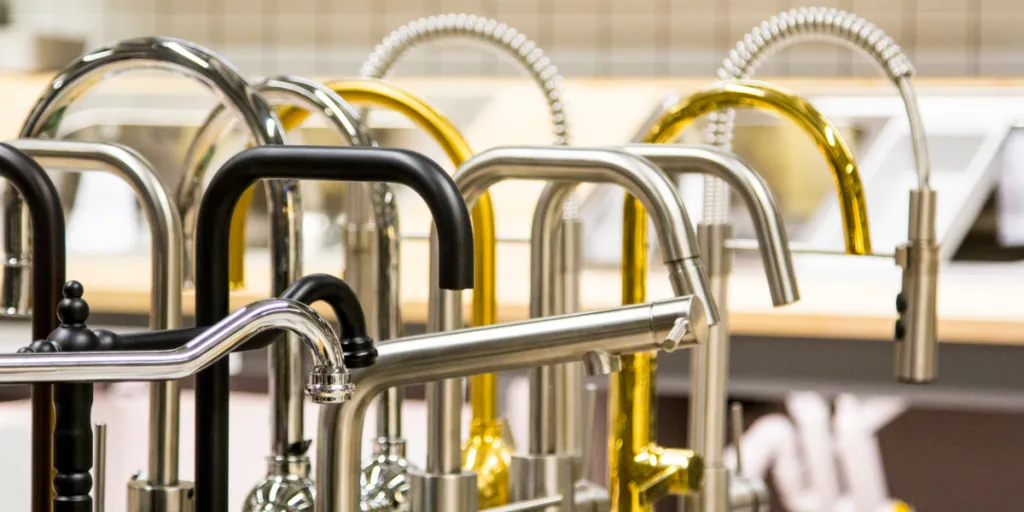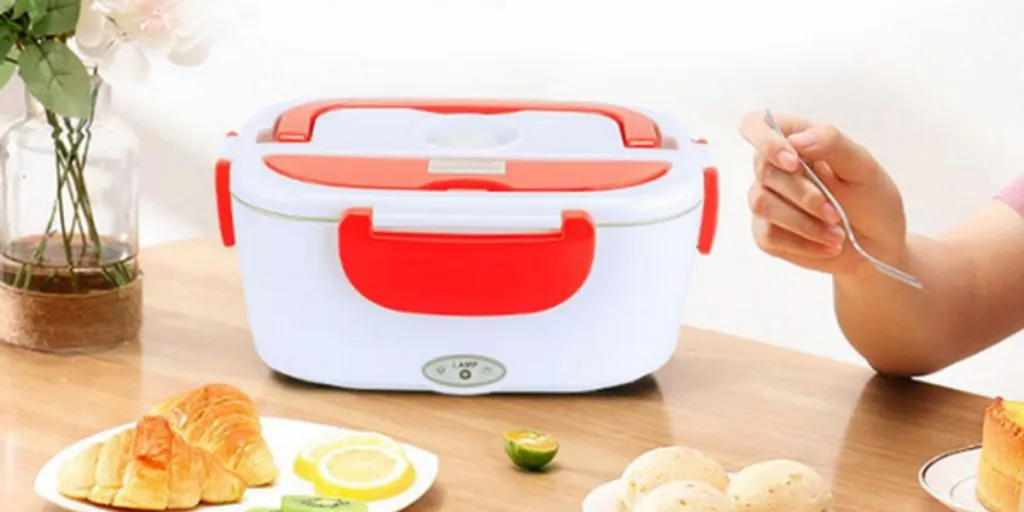In 2024, glass food storage containers continue to gain favor due to their superior qualities, such as sustainability, non-reactivity, and long-term durability. These containers offer a reliable solution for maintaining the freshness and quality of foods, from everyday kitchen uses to high-demand culinary environments. The shift towards glass not only reflects a commitment to health and safety but also aligns with increasing environmental awareness. These attributes make glass containers an essential element for those managing supply inventories in the food industry, ensuring that products meet both consumer expectations and regulatory standards.
Table of Contents
1. Types and functions of glass storage containers
2. Market trends in glass food storage
3. Criteria for choosing the right containers
4. Leading glass storage models and their features
1. Types and functions of glass storage containers
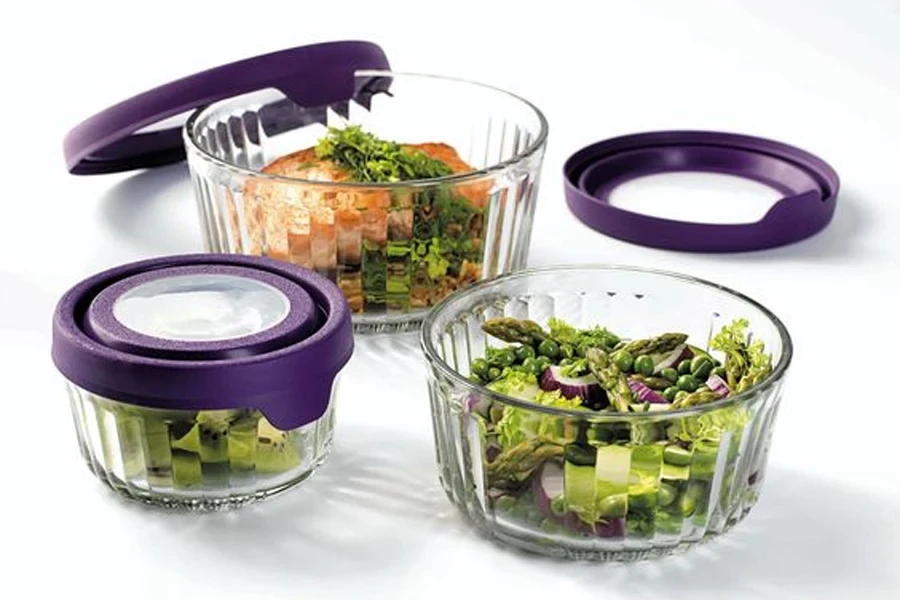
Variety in glass materials
Glass food storage containers are primarily made from two types of glass: borosilicate and tempered glass, each offering unique advantages for storage needs. Borosilicate glass is renowned for its robust thermal shock resistance, making it an ideal choice for moving containers directly from a cold environment to a hot one without the risk of breakage. This quality makes borosilicate containers particularly suited for baking or reheating food in ovens or microwaves directly from the freezer.
On the other hand, tempered glass, while not as resistant to sudden temperature changes as borosilicate, boasts greater strength and durability under normal usage conditions. It is treated through a thermal tempering process that makes it tougher than regular glass, meaning it is less likely to break upon impact. For everyday use, where drastic temperature changes are less of a concern, tempered glass offers a practical and durable solution.
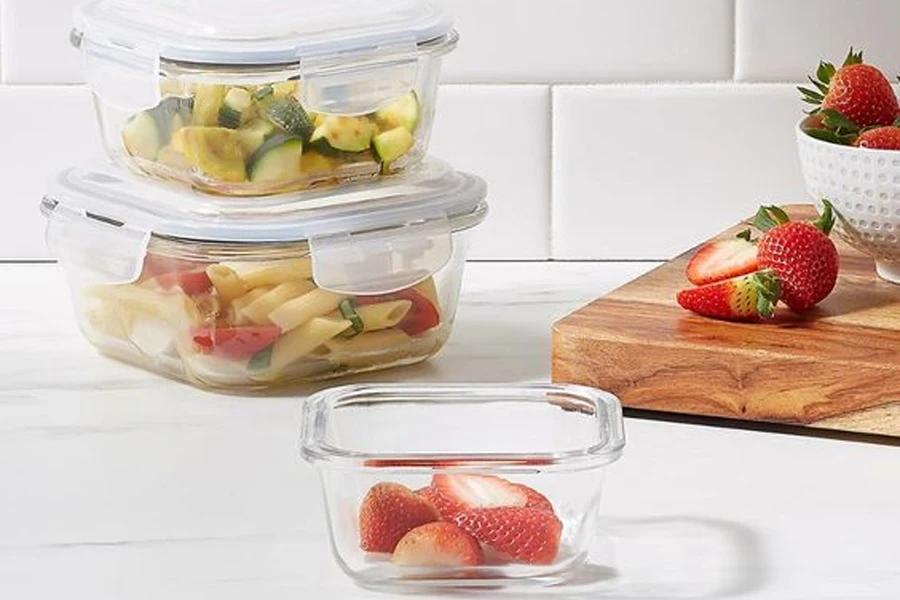
Design and usability
The design of glass food storage containers varies widely, with options designed to meet different culinary and storage needs. These containers come in various shapes, such as rectangular, square, and circular, each serving different storage purposes. Rectangular containers are ideal for storing large quantities of items like baked dishes or marinated meats, efficiently utilizing space in refrigerators and freezers. Square containers often find use in storing ingredients or leftovers, while round containers are typically favored for liquids and soups due to their symmetrical design that allows for even heat distribution.
Special features such as compartmentalization and stackability also enhance the usability of glass containers. Compartmentalized containers enable the separation of different types of food within the same container, making them perfect for meal prep and ensuring flavors do not mix. Stackable designs allow for the orderly organization of food, optimizing space in kitchens, which is crucial in professional settings where efficiency and space management are paramount.
These design elements are reflective of the industry’s response to consumer demand for versatile, durable, and space-efficient storage solutions. As the market continues to evolve, these features play a significant role in the decision-making processes of those responsible for procuring and managing kitchen inventories, ensuring that both functionality and space utilization are maximized.
2. Market trends in glass food storage
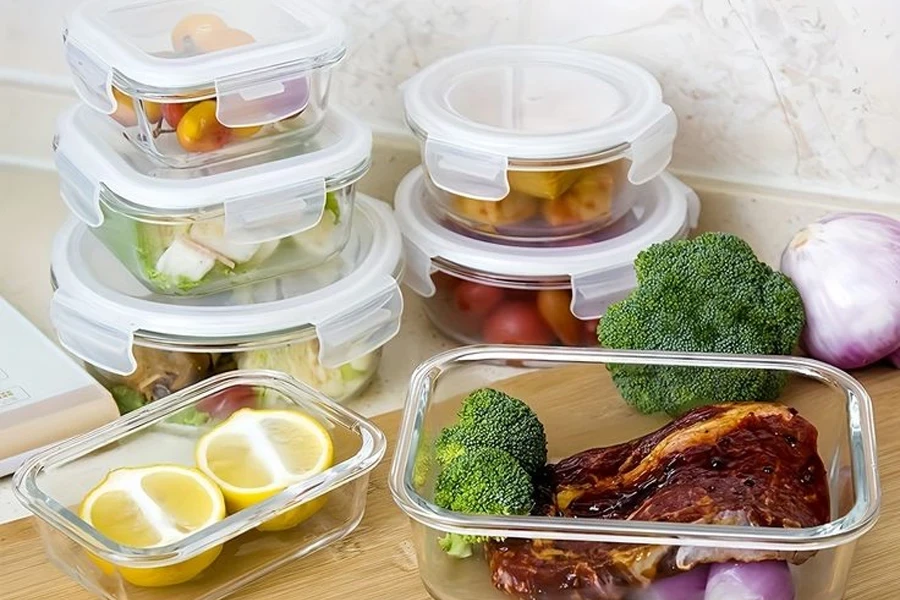
Shifts in consumer preferences
The shift toward sustainable and durable storage solutions marks a significant trend within the glass food storage market. As environmental concerns continue to grow, consumers increasingly opt for products that promise longevity and minimal environmental impact. This shift is evident in the rising preference for glass containers over plastic alternatives, driven by the ability to recycle glass and its inert nature that prevents chemical interactions with food. The demand for glass food storage solutions is expected to surge as they offer a combination of durability, safety, and sustainability, attributes highly valued in the food storage industry.
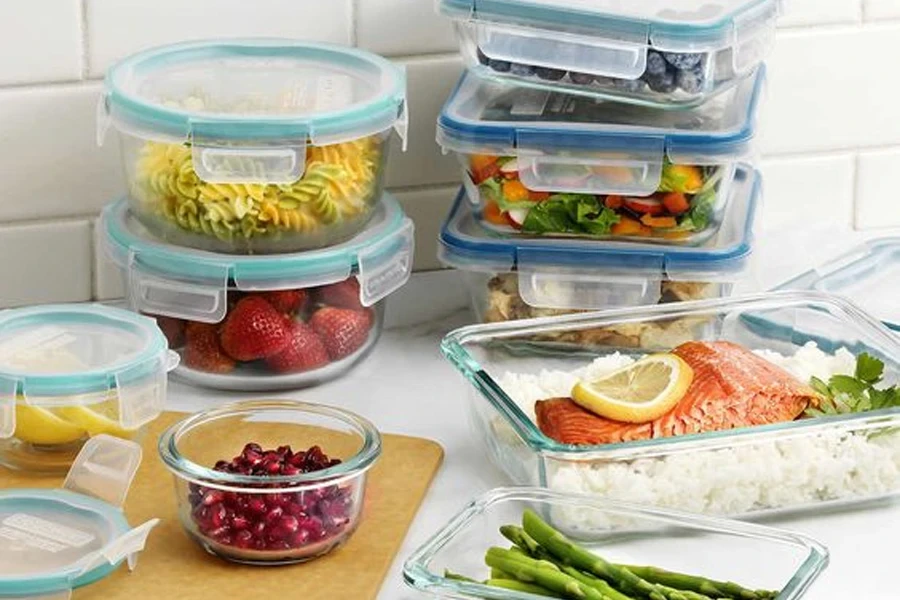
Technological advancements
Technological innovations are profoundly reshaping the glass food storage industry, particularly through the development of airtight seals and materials capable of superior thermal resistance. Airtight seals have revolutionized the market by significantly enhancing the freshness preservation of stored foods, which is crucial for both home use and commercial applications in the food sector. These seals prevent air exposure, which can lead to spoilage and waste, thereby supporting the consumer demand for more sustainable food storage solutions.
Furthermore, advancements in glass compositions that offer improved thermal resistance are making glass containers more versatile and safer for use in extreme temperatures. This includes innovations in borosilicate and tempered glass, which are now designed to withstand higher thermal shocks without cracking. Such technological improvements not only enhance the functional appeal of glass containers but also extend their usability across a range of cooking and storage applications, from ovens to freezers, without risk of damage.
The integration of these technologies into glass food storage products aligns with broader trends in consumer electronics and smart home devices, where connectivity and sustainability are increasingly prioritized. The development of glass storage containers that can integrate with smart kitchen systems for better food management is an area ripe for growth. As these technologies evolve, they will continue to influence purchasing decisions by offering consumers greater convenience and efficiency in managing their food storage needs.
3. Criteria for choosing the right containers
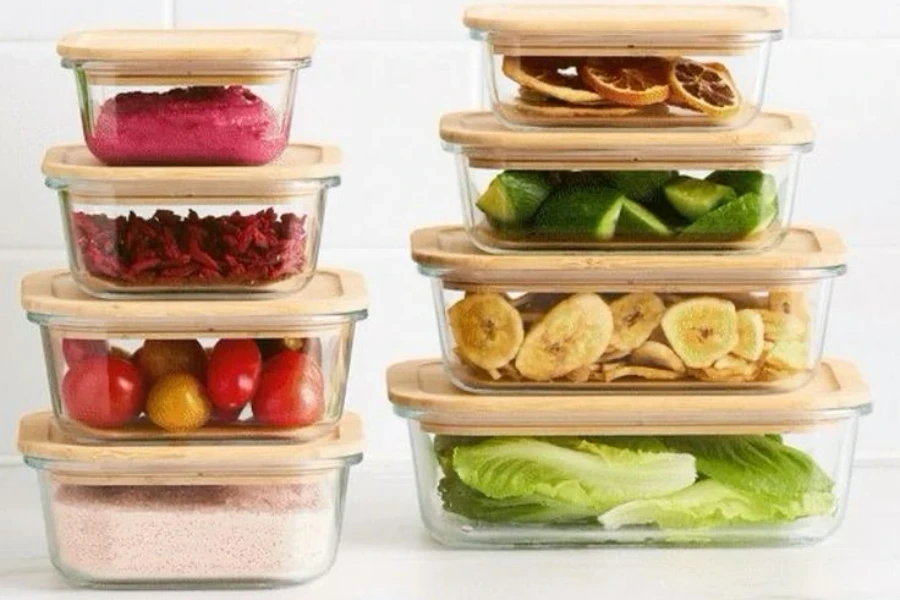
Assessing quality and durability
When selecting glass food storage containers, the primary considerations should be quality and durability. High-quality materials extend the lifespan of containers, ensuring that they withstand frequent use and cleaning without deteriorating. For instance, borosilicate glass is prized for its ability to handle sudden temperature changes, making it ideal for transferring foods from the freezer directly to an oven. This capability not only enhances convenience but also reduces the risk of glass breakage. Similarly, tempered glass, known for its strength and safety features, offers resilience against impacts, making it suitable for daily use. These materials ensure that containers remain functional and aesthetically pleasing over time, even under rigorous conditions.
Matching containers to needs
Matching glass containers to specific storage needs involves considering lifestyle and culinary habits. For households or professional settings where meal preparation is done in bulk, larger containers are beneficial. These allow for the storage of substantial portions, reducing the need for multiple containers and saving space. Conversely, for those who prioritize portion control or have smaller storage spaces, smaller containers are ideal. Additionally, the choice between different types of closures, such as snap lids for leak prevention or simple glass lids for aesthetic appeal, should align with the intended use—whether for rigorous, leak-proof transport or simple home refrigerator storage.
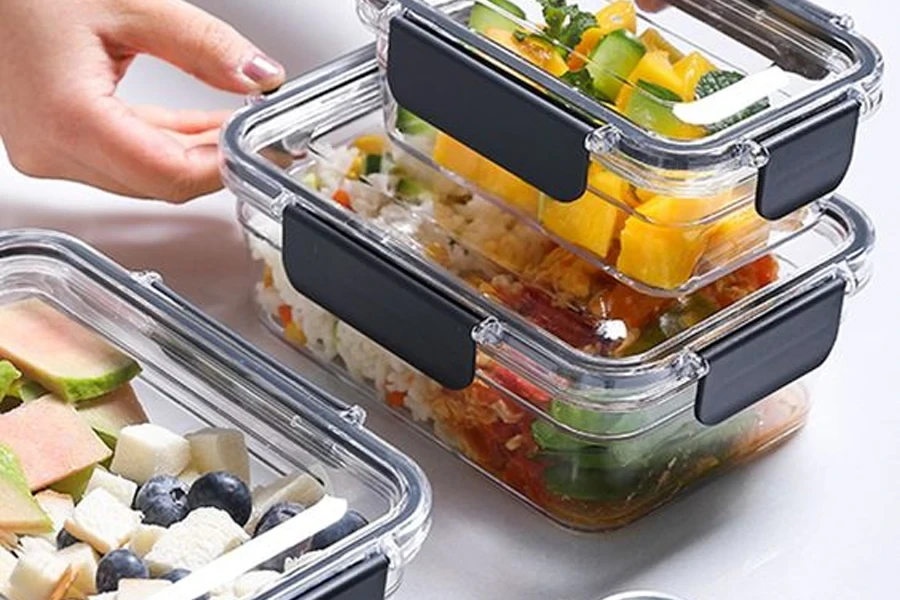
Safety and maintenance
The safety features of glass containers are critical, particularly their suitability for use across various environments. Containers intended for versatile use should be safely usable in microwaves, ovens, and freezers without risk of damage or safety hazards. This adaptability ensures that containers can transition from one environment to another, accommodating different cooking and storage methods. Maintenance considerations also play a significant role; for instance, ease of cleaning affects daily usability. Features like dishwasher-safe labels or non-absorbent materials that do not retain odors or stains contribute to the practicality and hygienic maintenance of food storage containers.
In every selection process, the emphasis should be on how well the containers meet the practical demands of daily food storage and preparation, considering environmental impact and user convenience. The goal is to ensure that each choice provides a balance of functionality, safety, and maintenance ease, thereby enhancing the overall efficiency of food management practices in any setting.
4. Leading glass storage models and their features
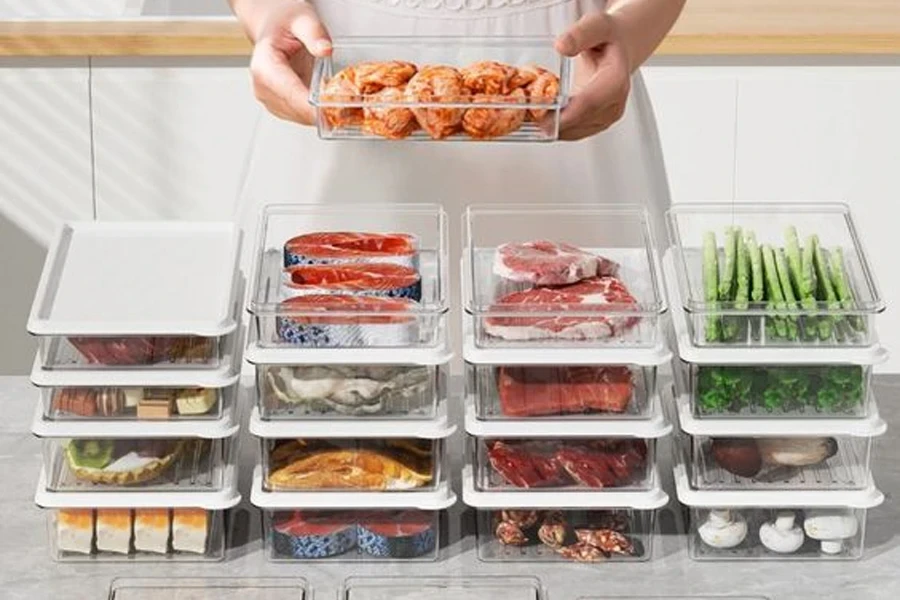
Review of top 2024 models
The 2024 market has seen several standout glass food storage containers that excel in durability, ease of use, and consumer satisfaction. Among the top performers is the Glasslock 18-piece set, noted for its comprehensive range of sizes and shapes, catering to diverse storage needs. This set is particularly appreciated for its oven, microwave, freezer, and dishwasher compatibility, showcasing the versatility demanded by contemporary users. Another notable model is the Pyrex Simply Store 18-Piece set, which has been lauded for its robustness and clean design, making it a favorite for both home cooks and professional settings.
Further elevating the standards of container design is the OXO Good Grips Smart Seal set, which includes features such as BPA-free materials and airtight seals that ensure food freshness and spill prevention. This model has been highlighted for its practicality in daily use, from storage to reheating. Additionally, the Snapware Total Solution Glass set offers a unique four-latch lid system that has been engineered to offer an extra secure seal, making it ideal for transporting meals without risk of leaks.
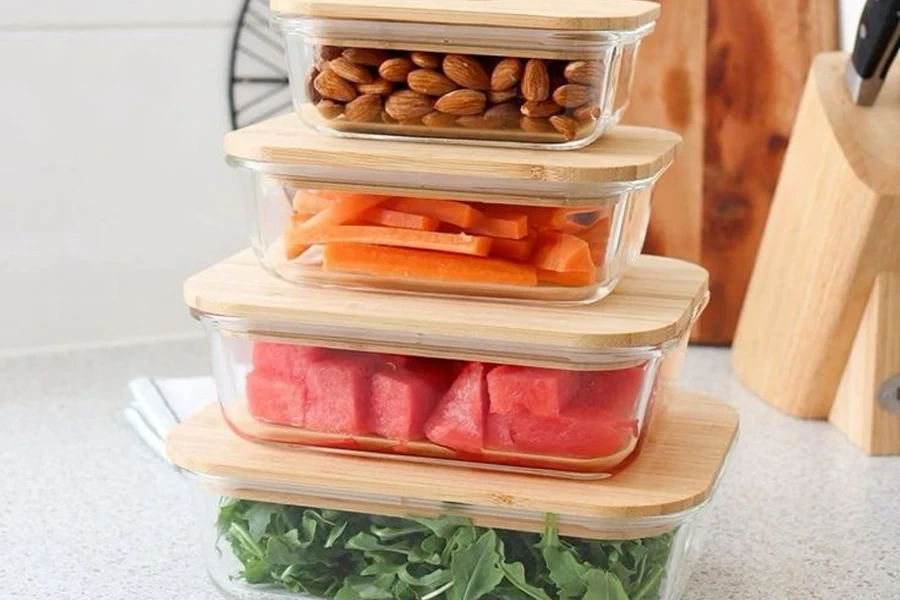
Feature comparison
When comparing the features of these leading models, several unique selling points emerge. The Glasslock set is often chosen for its comprehensive safety features, as it is made from BPA-free glass that withstands high temperatures and sudden thermal changes. Its lids are easy to secure, although initially stiff, and provide a reliable seal that prevents leaks and maintains freshness.
On the other hand, the Pyrex set stands out for its durability and ease of cleaning, attributes that make it highly suitable for frequent use. It offers a variety of container sizes that cater to different storage needs, from small servings to large meals, enhancing its appeal to a broad user base.
The OXO set’s smart seal technology is a key feature that sets it apart, offering users peace of mind when storing or transporting food, thanks to its leakproof performance. Meanwhile, the Snapware set’s four-latch lid design not only ensures a secure seal but also adds an extra layer of security against spills, making it an excellent choice for those who frequently carry meals on the go.
These models exemplify the advancements in glass food storage technology, focusing on user-friendly features, safety, and versatility, which are crucial for meeting the dynamic needs of today’s consumers. Each model brings something unique to the table, making the choice largely dependent on specific user preferences and lifestyle requirements.
Conclusion
Selecting the optimal glass food storage containers in 2024 hinges on understanding their material qualities, design features, and technological advancements. The leading models not only cater to diverse culinary and storage needs with enhanced durability and versatility but also align with environmental sustainability goals. By integrating features such as airtight seals and thermal resistance, these containers significantly boost kitchen efficiency, ensuring that food remains fresh longer while accommodating modern cooking and storage practices effectively. These developments underscore a significant shift towards more resilient and sustainable kitchen solutions in professional settings.

